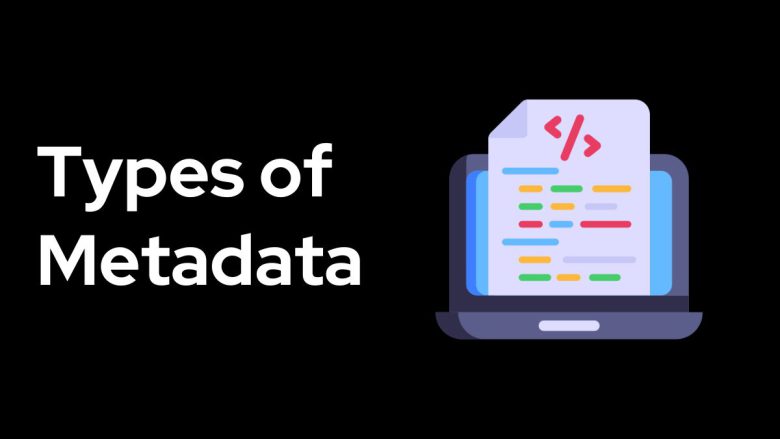
Metadata is important in data management. It gives context and meaning to the data we store and analyze. This is a full guide. We’ll look at the types and importance of metadata. We’ll also give examples to show how they’re used.
What is Metadata?
Metadata is also known as “data about data.” It describes the properties, context, and structure of the main data. It is in a database or data system. It facilitates better understanding, organization, and management of data.
Types of Metadata
Metadata can be classified into several types, each serving a distinct purpose. The main types of metadata are:
- Descriptive Metadata
- Structural Metadata
- Administrative Metadata
- Statistical Metadata
1. Descriptive Metadata
Descriptive metadata describes the data’s content and context. It makes the data easier to find and identify. This type of metadata is critical for data retrieval and use.
Examples of Descriptive Metadata:
- Library Catalogs:
- Title: “To Kill a Mockingbird”
- Author: Harper Lee
- Summary: A novel about the serious issues of rape and racial inequality.
- Keywords: Fiction, Classic, Race, Justice
- Photographs:
- Title: “Sunset over the Mountains”
- Photographer: Jane Doe
- Description: A photograph capturing the sunset over the Rocky Mountains.
- Date Taken: 2023-05-10
- Tags: Sunset, Mountains, Nature
- Database Entries:
- Table: Customers
- Column: Name (Description: Full name of the customer)
- Column: Email (Description: Email address of the customer)
- Column: SignupDate (Description: Date when the customer signed up)
- Table: Customers
2. Structured Metadata
Structural metadata describes the data’s structure. It shows how data pieces interact. It’s necessary for data integration, transformation, and processing.
Examples of Structural Metadata:
- Relational Databases:
- Table: Orders
- Columns: OrderID (INTEGER), CustomerID (INTEGER), OrderDate (DATE), TotalAmount (DECIMAL)
- Primary Key: OrderID
- Foreign Keys: CustomerID (references Customers.CustomerID)
- Indexes: OrderDate_Index (on OrderDate)
- Table: Orders
- XML Documents:
- Element: <book>
- Attributes: title, author, ISBN
- Child Elements: <title>, <author>, <publicationDate>
- Element: <book>
- Data Warehouses:
- Fact Table: Sales
- Dimensions: Product (references ProductID), Customer (references CustomerID), Time (references DateKey)
- Measures: SaleAmount, Quantity
- Fact Table: Sales
3. Administrative metadata.
Administrative metadata describes the management and administration of data. It includes data about who owns it. It includes data about who can access it. It includes creation and change dates. And, it includes the data’s lifecycle. This type of metadata is critical to data governance and compliance.
Examples of Administrative Metadata:
- Files and Documents:
- File: AnnualReport2023.pdf
- CreatedBy: John Smith
- CreatedDate: 2023-01-15
- LastModifiedBy: Jane Doe
- LastModifiedDate: 2023-05-10
- AccessRights: Read/Write for Finance Team, Read for Management
- File: AnnualReport2023.pdf
- Database Tables:
- Table: EmployeeRecords
- CreatedBy: HR_Admin
- CreationDate: 2022-03-01
- LastModifiedBy: HR_Manager
- LastModifiedDate: 2023-04-25
- AccessRights: Read/Write for HR Department, Read for Managers
- Table: EmployeeRecords
- Data Pipelines:
- Pipeline: DailyETLProcess
- DataSource: SalesSystem
- Schedule: Daily at 2 AM
- LastRun: 2024-06-02 02:00:00
- DataSteward: DataEngineer
- ErrorLog: ETL_Errors.log
- Pipeline: DailyETLProcess
4. Statistical metadata
Statistical metadata describes data distributions, mean, median, standard deviation, and other statistical measures. This type of metadata is critical for data analysis and reporting.
Examples of Statistical Metadata:
- Data Sets:
- DataSet: CustomerAges
- Mean: 35.6
- Median: 34
- StandardDeviation: 8.2
- DataRange: 18-65
- DataSet: CustomerAges
- Surveys:
- Survey: EmployeeSatisfaction
- Number of Respondents: 500
- AverageScore: 4.2
- ScoreDistribution: {1: 10, 2: 20, 3: 70, 4: 200, 5: 200}
- Survey: EmployeeSatisfaction
- Sales Data:
- DataSet: MonthlySales
- TotalSales: $1,200,000
- AverageSaleAmount: $150
- SaleCount: 8000
- SalesDistribution: {<$50: 1000, $50-$100: 3000, $100-$200: 2500, >$200: 1500}
- DataSet: MonthlySales
Read How to Edit Metadata in MP4 Files.
Conclusion
You must understand the metadata types. It is critical for managing and using data well. Descriptive metadata helps find and identify data. Structural metadata shows how the data is organized. Administrative metadata ensures good data governance. Statistical metadata aids analysis.
Organizations can improve their data operations and governance. They can also streamline data integration and make better decisions. They can do this by using these various types of metadata. You may work with databases, data warehouses, or other data systems. Using all types of metadata will improve your data management a lot.


